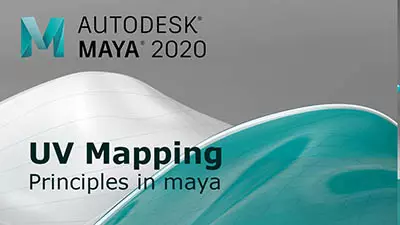Introduction to Maya - Modeling Fundamentals Vol 2
This course will look in the fundamentals of modeling in Maya with an emphasis on creating good topology. It's aimed at people that have some modeling experience in Maya but are having trouble with
complex objects.
#
1
09-08-2005
, 10:58 PM
Registered User
Join Date: Aug 2005
Join Date: Aug 2005
Posts: 3
How do you do this in Maya?
After years of work with mostly technical 3D-software I've finally switched to Maya and am now learning Maya modeling techniques.
As one of my first exercises I am trying to create what basically is a cylinder with a radial groove crossed by a cylindrical "ripple" with its edges rounded against the groove. (Please look at the attached picture).
I found this easy enough to model in Rhino or in one of the technical programs (SolidWorks, Catia etc.). But how is it done in Maya? The limitations of the NURBS trimmed surfaces obviously don't allow me to get the fillet right and I'm just not happy with creating that ripple by only moving control vertices, as that doesn't give me the geometrical exactness I would like to have. I really want that ripple to look like a cylinder.
Is there a better way to do this? Is NURBS the right way to start in the first place?
I would be very grateful if you could help!!
Greetings,
Nebogipfel
#
2
09-08-2005
, 11:01 PM
Registered User
Join Date: Aug 2005
Join Date: Aug 2005
Posts: 3
#
3
11-08-2005
, 10:12 PM
Registered User
Join Date: Apr 2003
Join Date: Apr 2003
Posts: 19
The idea here is to create two objects that fit together. You'll need to use Edit NURBS>Intersect Surfaces in order to get surface curves at the exact places of intersection. You'll also need to duplicate the objects (the main piece and the cylinder) because the next step is trimming.
Trim away the parts of the main piece and the cylinder that you don't need using the surface curves from before. Now set the view to show the Trim Edges on the cylinder and the main piece and go to Edit NURBS>Round Tool. Select the trim edges on the cylinder and the main piece and hit enter. This will create a nice tranisitional section between the two surfaces. There you have it.
To render (depending on the size of this object in your scene), you may want to increase the NURBS tessellation at render time. To do this, select the surfaces you have created and, in the Render menu set, go to Render>Set NURBS Tessellation[]. Under Curvature Tolerance select Highest Quality, and make sure at the top that Apply Tessellation is set to Selected Surfaces. Hit Set and Close and you're good to go.



Last edited by TheElement; 11-08-2005 at 10:29 PM.
Posting Rules Forum Rules
Similar Threads
Death Brain Maya Nurb Tutorials
by liesengthok in forum Maya Modeling replies 1 on 21-10-2007
maya 2008
by mirek03 in forum Maya Basics & Newbie Lounge replies 13 on 25-08-2007
how to lean well maya?
by lmner in forum Maya Basics & Newbie Lounge replies 5 on 07-05-2007
Use Maya For Game... Why Maya?
by Triple-x in forum Maya Basics & Newbie Lounge replies 14 on 02-09-2005
Maya vs. 3DS, Light Wave, Rhino ino ect...
by THX1138 in forum Maya Basics & Newbie Lounge replies 45 on 17-09-2003
Topics
Free Courses
Full Courses
VFX News
How computer animation was used 30 years ago to make a Roger Rabbit short
On 2022-07-18 14:30:13
Sneak peek at Houdini 19.5
On 2022-07-18 14:17:59
VFX Breakdown The Man Who Fell To Earth
On 2022-07-15 13:14:36
Resident Evil - Teaser Trailer
On 2022-05-13 13:52:25
New cloud modeling nodes for Bifrost
On 2022-05-02 20:24:13
MPC Showreel 2022
On 2022-04-13 16:02:13







